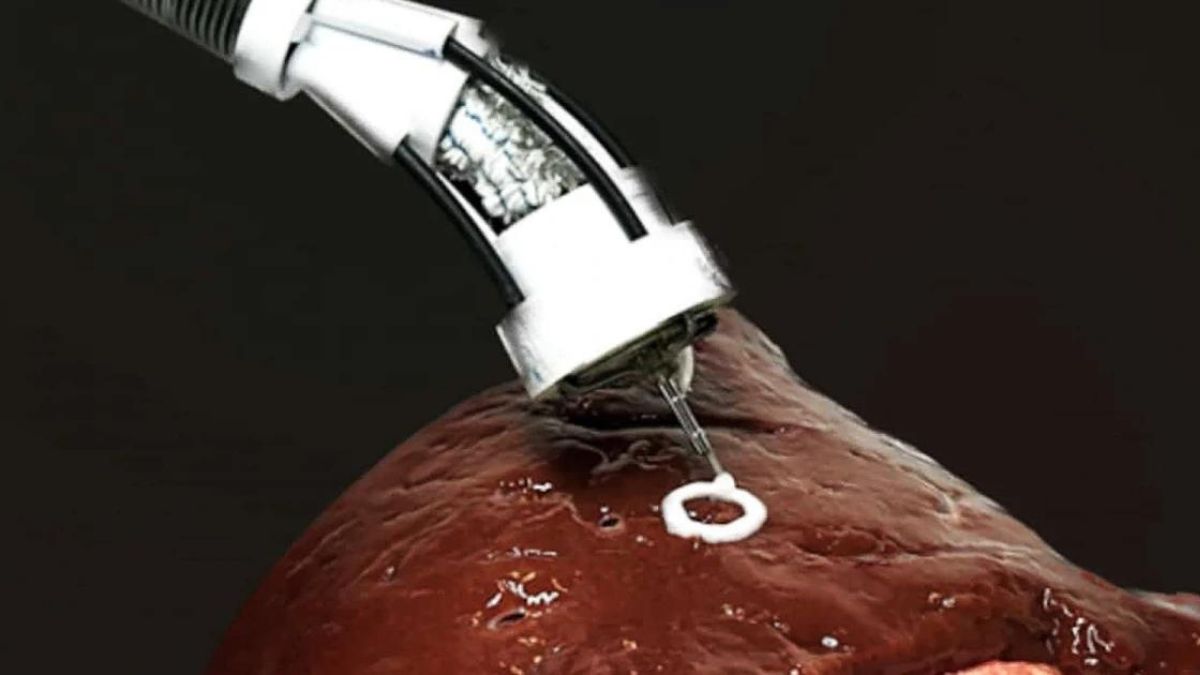Flexible 3D Bioprinter Can Layer Organic Material Directly onto Damaged Organs
March 18, 2023 By Monica Green

(Image Credit Google)
Image credit : Freethink
Researchers at the University of New South Wales (UNSW) have developed a flexible 3D bioprinter that has the potential to revolutionize minimally invasive surgeries by layering organic material directly onto organs or tissues. This approach, unlike others in the field, could help patients avoid major surgeries or organ removal. Although this sounds like a futuristic concept, the team cautions that human testing is still five to seven years away.
The bioprinter, called F3DB, boasts a soft robotic arm that can assemble biomaterials, including living cells, onto damaged organs or tissues. The flexible, snake-like body would enter the body via the mouth or anus, with a pilot or surgeon guiding it to the affected area using hand gestures. The bioprinter also has jets that can spray water onto the targeted region, and its printing nozzle doubles as an electric scalpel. The team hopes that this multifunctional approach could ultimately become an all-in-one tool for minimally invasive operations.
The F3DB’s robotic arm uses three soft-fabric-bellow actuators powered by a hydraulic system consisting of “DC-motor-driven syringes that pump water to the actuators.” According to IEEE Spectrum, both the arm and the flexible printing head can each move in three degrees of freedom, much like a desktop 3D printer. Furthermore, a flexible miniature camera is incorporated into the design to enable the operator to view the task in real-time.
During its initial laboratory tests, the team used non-biomaterials such as chocolate and liquid silicone before testing it on a pig’s kidney. Finally, they printed biomaterials onto a glass surface in an artificial colon. “We saw the cells grow every day and increase by four times on day seven, the last day of the experiment,” said Thanh Nho Do, co-leader of the team and Senior Lecturer at UNSW’s Graduate School of Biomedical Engineering. “The results show the F3DB has strong potential to be developed into an all-in-one endoscopic tool for endoscopic submucosal dissection procedures.”
Although the team believes that the bioprinter has immense potential, further testing is necessary to make it a reality. The next steps will include animal studies, followed by human testing, which the team believes is five to seven years away. However, according to Ibrahim Ozbolat, a professor of engineering science and mechanics at Pennsylvania State University, “commercialization can only be a matter of time.”
The F3DB could potentially revolutionize minimally invasive surgeries, reducing pain and recovery time for patients. However, more research is required before it can be used in humans. If it proves successful, the F3DB could be a game-changer for the medical industry, offering surgeons an all-in-one tool for incision, cleaning, and printing. With the potential to make surgeries less invasive and traumatic, the F3DB represents a significant advancement in the field of bioprinting.








